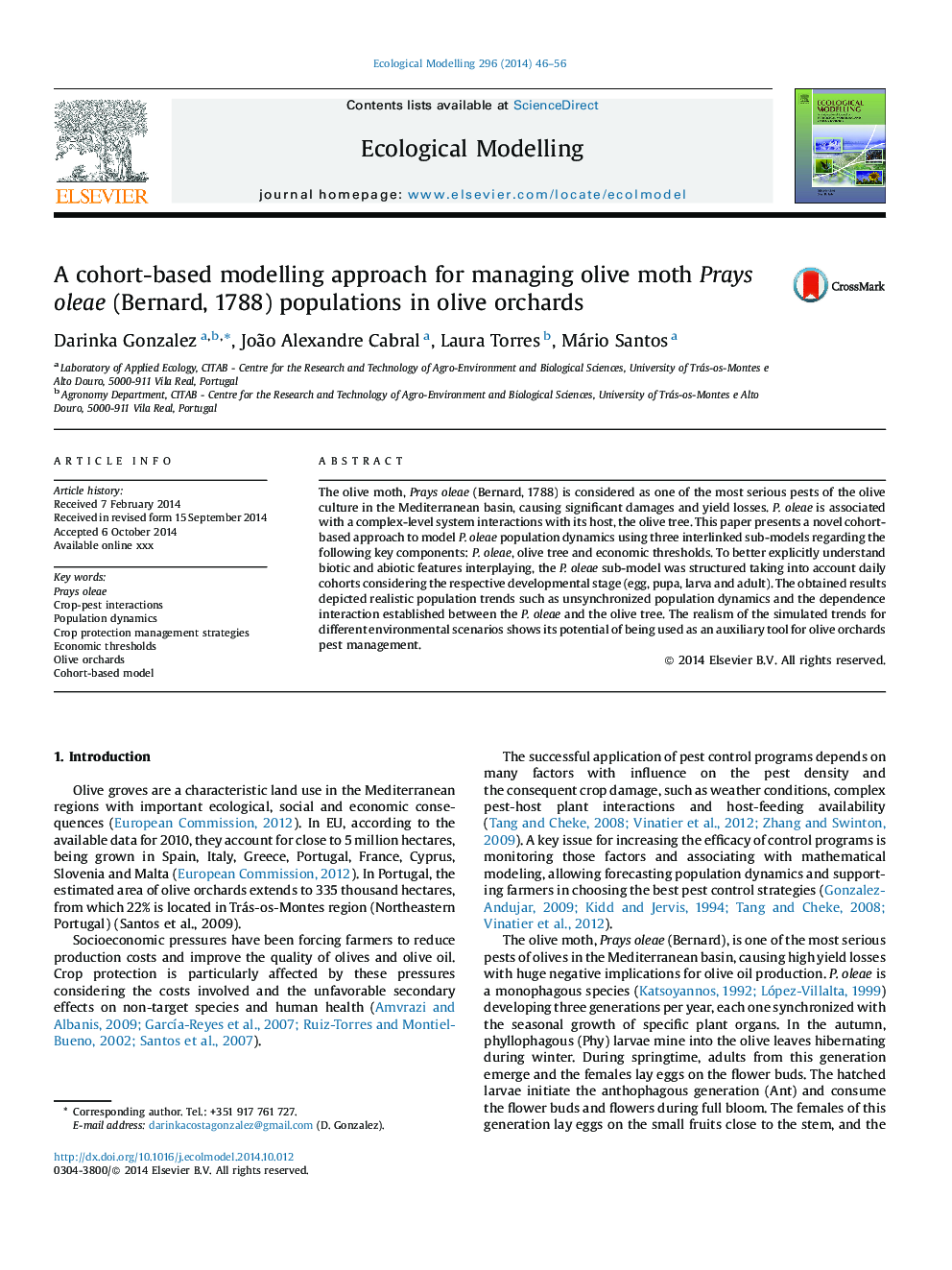| Article ID | Journal | Published Year | Pages | File Type |
|---|---|---|---|---|
| 6296799 | Ecological Modelling | 2015 | 11 Pages |
Abstract
The olive moth, Prays oleae (Bernard, 1788) is considered as one of the most serious pests of the olive culture in the Mediterranean basin, causing significant damages and yield losses. P. oleae is associated with a complex-level system interactions with its host, the olive tree. This paper presents a novel cohort-based approach to model P. oleae population dynamics using three interlinked sub-models regarding the following key components: P. oleae, olive tree and economic thresholds. To better explicitly understand biotic and abiotic features interplaying, the P. oleae sub-model was structured taking into account daily cohorts considering the respective developmental stage (egg, pupa, larva and adult). The obtained results depicted realistic population trends such as unsynchronized population dynamics and the dependence interaction established between the P. oleae and the olive tree. The realism of the simulated trends for different environmental scenarios shows its potential of being used as an auxiliary tool for olive orchards pest management.
Related Topics
Life Sciences
Agricultural and Biological Sciences
Ecology, Evolution, Behavior and Systematics
Authors
Darinka Gonzalez, João Alexandre Cabral, Laura Torres, Mário Santos,
